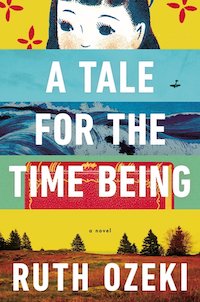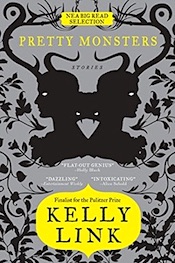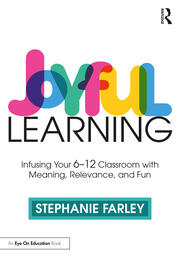Sneak the Power of SEL into Your English Class
By Stephanie Farley

For example, science textbooks present the story of the natural world as viewed through the lens of scientific inquiry, while at home caregivers teach the stories of our ancestors and the challenges they faced.
As a lifelong English teacher, I’ve certainly viewed storytelling as a time-tested strategy for not only conveying critical information about the world in which we live, but also how to live in it…stories provide humans a map of the world and the multitudinous routes to being.
As a result, it makes perfect sense to me that – in the interest of adding value, saving time and helping our students thrive – we might experiment with sneaking a little SEL into English class.
From Gilgamesh to today
Consider the Epic of Gilgamesh, which has long been touted as the first tale to be written down on clay tablets (at least in my Western-oriented education). Through Gilgamesh’s failed quest for immortality, we learn about self-regulation. As we read, we may think, man, if Gilgamesh had just tamped down his pride and enjoyed the life he had, he would have been a happier dude.

I propose that, as English teachers, we take these understandings and turn them into SEL mini-lessons for our students. For example, instead of simply identifying a character’s emotions (like curiosity or longing or anticipation), we could ask students to write about what these emotions look like in their lives.
We might say, “Tell a story about a time when you did something completely unexpected. Explain the feeling that led you to that unexpected action.” The extension activity is to “write about an adventure that changed how you thought about the world.”
Doing this hits on CASEL’s SEL skills of self-awareness, self-management, and responsible decision-making (see “What is the CASEL Framework?”).
Insights into social awareness
Another way SEL is a natural fit for English class is that when students think, talk, and write about characters, they are honing their social awareness skills. Students have to take perspectives other than their own, identify the social norms of the characters’ settings, and recognize how the demands of a specific situation impact the characters’ choices. Social awareness!
Then, we can create opportunities to apply these skills by asking students to write their own stories that demonstrate an understanding of societal rules. I did a project like this every year with my 8th graders, which entailed the following:

✦ Then students were asked to build a monster inspired by one of their fears. So, for example, students might make a monster that represented their fear of heights or creepy, crawly things. A few memorable projects included the fear of artificial intelligence (prescient, given ChatGPT’s intermittent weirdness), the fear of being consumed whole by another creature, and the fear of failure.
✦ The act of “building a monster” was physical…I had students consult with the art teacher about the media and methods that best suited their projects. As a result, monsters were made of all sorts of materials, ranging from clay to paper clips to toothpicks.
✦ Once the monsters were built, students wrote bios and character sketches for their creations. Students also interviewed each other about the monsters and subsequently featured another person’s monster in a scene with their own creature. These interactions were governed by the social norms established by both monsters’ creators.
✦ Finally, students presented their monsters to the entire class and read aloud the scenes they’d written.
Here’s a picture of one of the monsters my students created:
The monster represents the fear of feeling out of control.
This project was highly engaging because it tapped into the positive emotions of novelty and enthusiasm. My students loved hearing about each other’s fears and seeing the physical form those fears took. Not only did students advance their writing skills by having to describe their monster and someone else’s, but they advanced their SEL skills by exercising social awareness in interviewing and “interacting with” another person’s creation.
Recognizing relationship skills
Lastly, English class is where students can experiment with the SEL competency of relationship skills (also found in the CASEL listings) with relatively low stakes.
When students are allowed to write stories, they can play out scenarios of what happens when a character fails to show empathy, listen attentively, or communicate effectively. In addition, as students read and comment upon each other’s work, they learn to give and receive feedback, collaborate to solve problems, and gain cultural competency.
In this context the English teacher simply needs to point out the skills being used by asking questions like “What do you think might happen in the plot if your character communicated more clearly with his sibling?” or “If your partner could only change one thing about his story, what change should that be?”
To be clear, I am not advocating that English class should be the only place SEL happens. All teachers have a role to play in helping students understand their social-emotional selves. In the best case scenarios, schools would allocate time and resources to a research-based SEL program delivered in advisory or a Human Development class.
With that being said, it’s also true that stories have always offered us a system for exploring and reflecting upon the human condition. Including a sneaky bit of SEL in English class is simply one more way to support and enrich the student experience.
Works Cited
“What is the CASEL Framework?” casel.org. https://casel.org/fundamentals-of-sel/what-is-the-casel-framework/#the-casel-5. Accessed 6 February 2023.

Stephanie’s first book, Joyful Learning: Tools to Infuse Your 6-12 Classroom with Meaning, Relevance, and Fun (Routledge, 2023), is now available. She has created professional development for schools around reading and curriculum and coaches teachers in instruction, lesson planning, feedback, and assessment. Visit her website Joyful Learning and find her other MiddleWeb articles here.




































